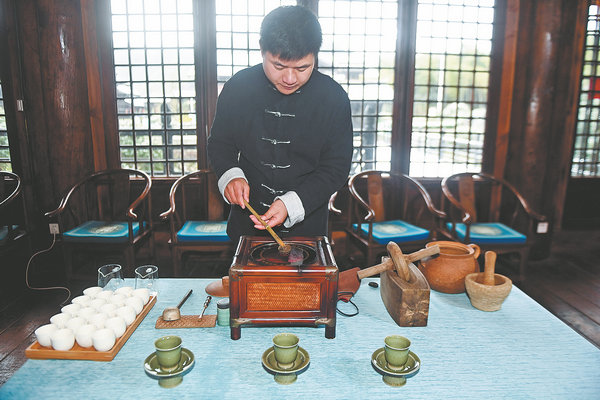

Rebirth of oriental leaves
The participation of the young generation has injected fresh blood into the Chinese tea industry.
A new Chinese tea shop called "Lu Yu's Tea" has recently become a hit among young people in Hangzhou.
"Youngsters in China may be familiar with Starbucks, but very few know about Lu Yu," says Liu Yanli, the manager of the brand. Tang scholar Lu Yu, known as the Sage of Tea, wrote The Classic of Tea, the first treatise in China in which knowledge of tea and related practices were elaborated upon systematically.
Liu says they opened the tea shop to offer customers a range of fresh and healthy Chinese tea-based drinks to encourage more people to learn about traditional tea culture.
They use local tea leaves as the base, and mix the tea with fresh milk and fruit, such as pears and peaches, to create new flavors, which will be "better accepted by young consumers".
Data released by China's e-commerce platform Meituan shows that in 2021, the volume of China's tea beverage market was 10.9 times that of coffee, and those born after 1995 have become the main driver of tea beverage consumption.
Tea is not only a daily drink welcomed by more young people, but also plays a more important role in their social life.
In a teahouse on an ancient block of Jinhua city, Zhejiang, people gathered around the owner, who chatted with the guests as he brewed and poured tea for them.
"As people's understanding of tea culture deepens, more of the traditional culture will become fashionable, and China's tea culture will incorporate more new elements," says Yin Junfeng, a researcher at the Tea Research Institute of the Chinese Academy of Agricultural Sciences.